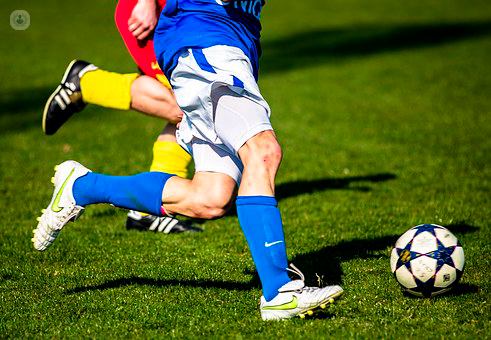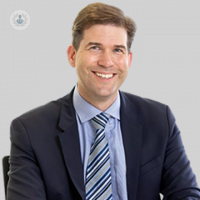The most common sports injuries and why they happen
Escrito por:The health benefits of maintaining an active lifestyle are well recognised. In children and teenagers, participating in sports can build confidence and maintain fitness. In adults, regular exercise can help to avoid depression, obesity, cardiac disease and diabetes. However, all sports do risk injury. In this article Mr William Bartlett explains which sports injuries occur most commonly and why.

The pattern of sports injuries seen varies according to an individual’s age, their fitness and their sports interest.
Knee injuries
In young adults and teenagers, knee injuries are particularly common due to sprains (of ligaments and tendons) and strains (of muscles).
Whilst many of such injuries will recover without specific medical treatment, more serious injuries such as an anterior cruciate ligament rupture or a tear to the meniscal cartilage may require surgery. These injuries frequently occur on the football or hockey pitch and may be brought about by an uncontrolled turn, an awkward landing, or a nasty tackle.

Initial treatment is directed towards reducing the pain and swelling. This includes:
- rest
- elevation
- compression bandages
- icing
- use of anti-inflammatory medication.
If the pain or swelling continues after a couple of days, a serious injury may be present and a MRI scan is often indicated.
Whilst sporty older adults may also suffer from traumatic knee injuries, more common problems relate to overuse causing problems such as tendonitis. Joint pain and swelling brought on by exercise may also be the first signs of early wear and tear arthritis.
Hip injuries
In contrast to knee injuries, sports hip injuries often develop over time in association with repetitive training.
In young adults, groin pain associated with a feeling of catching during hip flexion may be due to femoro-acetabular impingement, hip dysplasia, or a labral tear. Sometimes a groin hernia may cause similar symptoms so it is important to be carefully assessed by a doctor if this is present.
In active “middle-aged” patients, repetitive training such as use of a treadmill can result in pain over the outer-upper thigh due to inflammation of the hip muscles (known as trochanteric pain syndrome). Road-runners also commonly experience tightness in the iliotibial band resulting in stiffness and aching over the lower outer thigh.

Worsening pain around the hip associated with repetitive weight-bearing exercise (such as training for a marathon), may suggest an impending femoral stress fracture. If such symptoms are present, it is critically important that a specialist assessment is made in order to confirm the diagnosis and prevent possible fracture displacement with the need for surgery.
Whilst most hip sports injuries can be managed through careful rehabilitation and adjustments to training techniques, it is important to seek a specialist opinion if symptoms fail to respond promptly to rest.
What problems can sports hip or knee injuries cause in later life?
Whilst many hip or knee injuries are self-limiting, serious injures such as a meniscal tear at the knee can increase the risk of developing premature arthritis at the knee. It is therefore sensible not to undertake strenuous high-impact exercise if there is a history of significant injury or if the activity is associated with joint pain, swelling, or stiffness.
Despite this, following a careful low-impact exercise regime such as swimming or cycling can actually help stave off the need for surgery in people with mild to moderate osteoarthritis.
What advice would you give to avoid sports injuries?
Whilst all sports present some risk of injury, the risk is greatest amongst contact sports. Sensible measures to reduce the risk include:
- Allow your body to recover by taking rest days and varying your exercise program.
- Strengthen muscles through conditioning exercises.
- Maintain flexibility by stretching daily and before play.
- Take a break from the sport when tired.
- Stop exercising if there is significant pain
- See a specialist to diagnose the problem is symptoms don’t resolve after rest.


